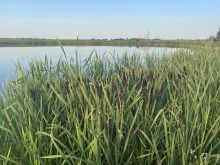PICTURE BUTTE, Alta. – Rural water in Alberta is generally fit to drink with a few exceptions, says a study that stretched from Grande Prairie to Lethbridge since 1994.
A random number of wells from every municipality in Alberta were sampled for the study, 824 in total, said Brent Paterson, of the irrigation branch with Alberta Agriculture.
Some wells showed quality problems but further examination revealed these wells had construction problems or were located close to a source of possible contamination, said Paterson.
“Water in deeper wells is excellent.”
Read Also

Europe holds promise for Canadian lentils
Pulse Canada is trying to help boost lentil consumption in Europe, which is already the fourth largest market.
Farmstead water was checked for heavy metals, nitrates, pesticide residues and bacteria.
The well water results indicated traces of 2,4-d and bromoxynil were present three percent of the time. About five percent showed nitrates above the Canadian drinking water guidelines and 7.5 percent exceeded the allowable bacteria counts.
Paterson said the government needs to go back in five years and recheck the same wells to make sure they are not deteriorating.
Northern and central Alberta dugouts have deteriorated over the years. Another study is ongoing in northern Alberta where agriculture officials are monitoring 15 dugouts for a year.
Other program
Another monitoring program is under way for the Oldman River basin.
Within the basin are 10 of the 13 irrigation districts in the province. They possess the highest number of intensive agriculture farms in Western Canada and there is concern that manure is leeching into the river systems and ground water.
The department hopes to set up intensive annual monitoring of the river system because of the intensity of agriculture and its potential to affect the water. If the water deteriorates it wants to know why.
“It is too easy to point fingers at a variety of sources whether it is the city of Lethbridge or intensive livestock operations. They may or may not be part of the problem,” said Paterson.














